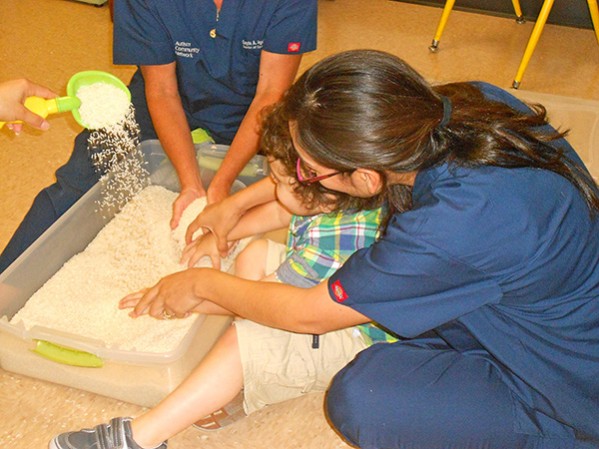For individuals on the autism spectrum, a diagnosis from a medical professional is necessary in order to qualify for medical services. One main difference in the assessment is in how the child is evaluated and whether the evaluation is done by an individual or a team.

At ACN, we conduct interdisciplinary autism assessments where a number of specialists participate in the evaluation and all of them are present at the same time from start to end.
The team consists of a developmental pediatrician or psychologist, a behavior analyst, a speech-language pathologist, and an occupational therapist. We believe that a comprehensive evaluation gives parents a clearer sense of the skills and deficits in their child and a clearer direction for seeking therapies.
The following is an illustration of the pathway to a diagnosis at ACN:
- After receipt of the initial referral an appointment is made for a Level 2 Focused Assessment (L2FA). This is a one-hour encounter with two autism specialists (i.e. SLP/Behavior Analyst or OT/Behavior Analyst). If this evaluation determines that a child is at high- risk for ASD, an appointment is made to return for a full-team diagnostic evaluation. If the child is not found to be at high risk for ASD but other developmental impairments are found, recommendations are made for appropriate services.
- A child returning to ACN for comprehensive diagnostic evaluation will receive a packet with behavior checklists, medical and developmental questionnaires, and other necessary information for the primary caregiver. A telephone interview is completed prior to the actual visit.
- On the day of the comprehensive diagnostic evaluation, the child receives a number of tests that may include a sensory profile, neurodevelopmental testing, a non-verbal cognitive test, identified barrier to learning, and the standardized Autism Diagnostic Observation Schedule Second Edition (ADOS-2).
- After completion of testing, a team conference allows the professionals to compare, review, and formulate a diagnosis, which is then reported to the parents before departure from clinic. The time from arrival to departure is approximately three to four hours.
- Two weeks after the evaluation, a Community Resource Assistance meeting is scheduled in order to link the family with services and resources in our community.
- A final report with test results, impressions, and recommendations is generated and sent to the family and the primary care provider. The child may be advised to return for follow-up or continue care elsewhere.
Of course, interdisciplinary autism assessments are not the only format when seeking a diagnosis. Other possible choices for referral include developmental pediatricians, psychologists, psychiatrists, and neurologists. All these specialists have different backgrounds and the evaluations differ in length, depth, and the number of visits to complete the diagnostic process.
Who diagnosed your child with autism? Do you know of a team evaluation clinic in your area?
By A Patricia Del Angel, M.D., Clinical Director, Autism Community Network
Sources: American Academy of Pediatrics (AAP), ACN’s policies and procedures.
A graduate of Abilene Christian University, Jennifer had a long career in TV Broadcasting. Upon learning her oldest son Sam had a form of Autism called Asperger’s Syndrome, she left her career and became a full-time mother to both of her sons. Jennifer elicited the participation of her family and together they produced several independent programs including a children’s animated series titled Ameriquest Kids, as well as a documentary and book titled, Coping to Excelling: Solutions for School-age Children Diagnosed with High-Functioning Autism or Aspergers Syndrome. She formed the nonprofit Asperger101 to provide on-going free resources related to ASD at Aspergers101.com and has implemented the Texas Driving with Disability Program and continues to grow the statewide initiative today. She and her husband have recently retired to their property in the Texas Hill Country.


Does the same testing procedure apply to a young man of 30? My nephew..in his grandmothers care…(father died 2 years ago, mother gone, grandfather past away last year….grandmother is 83 and needs to be in a smaller apt./or assisted living home herself.) My 30 yr old nephew was on a housing wait list but after his grandfather died last year…all of a sudden they are saying he needs to be retested before placed. Original diagnosis was back when he was 17/18 and lived with his father. He is scheduled for an evaluation next week.